At some point in the season as you inspect your tomato crop, you may have noticed a rotten, sunken spot on the end of the fruit.
It looks like a yellow or brown water-soaked stain where the blossom used to be, and over time, it turns into a hard, decaying, dark brown or black patch.
This anomaly isn’t a disease or insect damage, and its cause came long before you discovered what was happening.
It’s called blossom end rot (also known as BER) and it frequently affects tomatoes, as well as peppers, eggplant, summer and winter squash (including zucchini), cucumbers, and melons.
You might recognize these plants as members of the nightshade family and gourd family—they’re all susceptible to blossom end rot, which appears on green or ripening fruit (especially the first flush of the season).
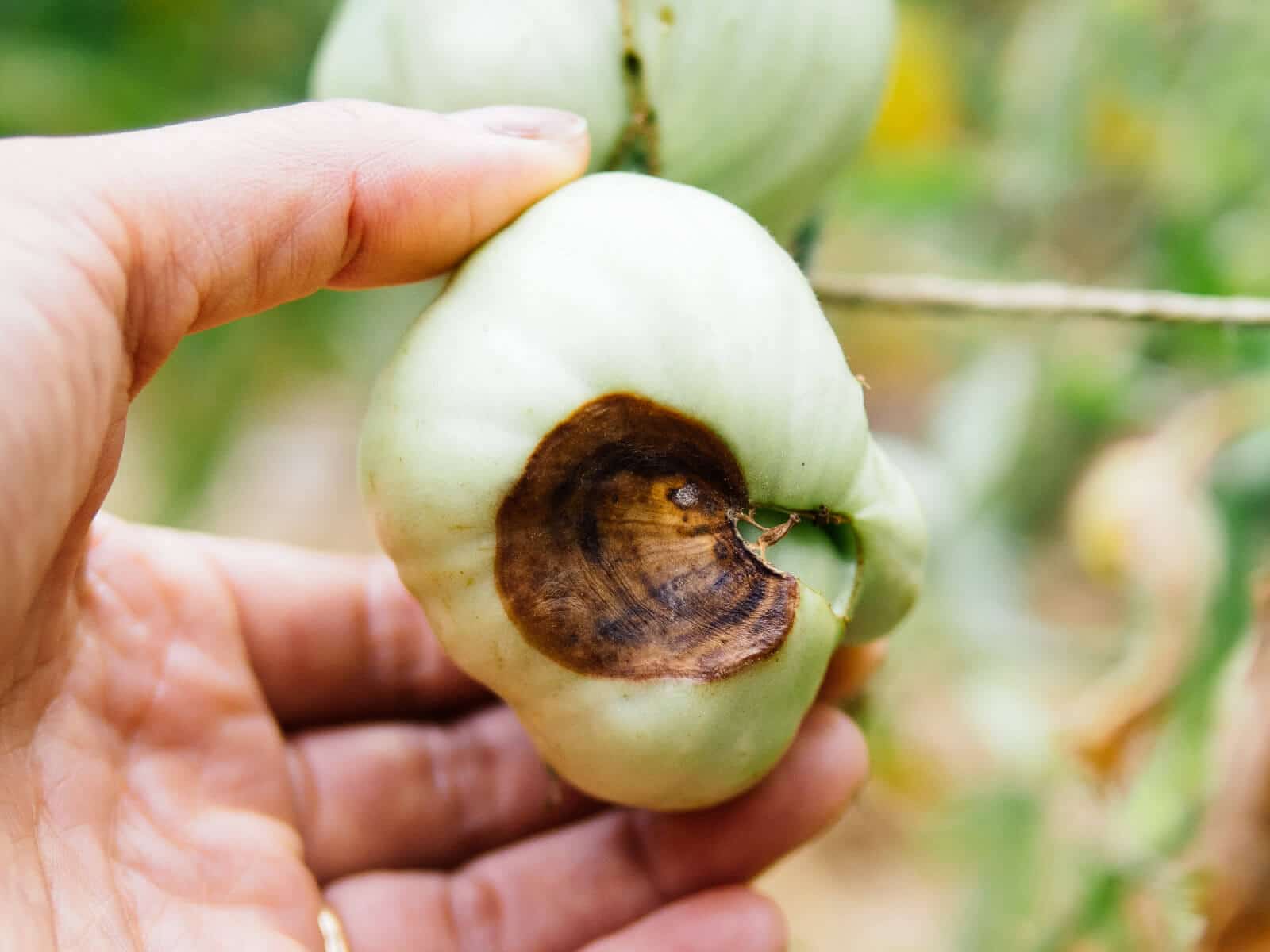
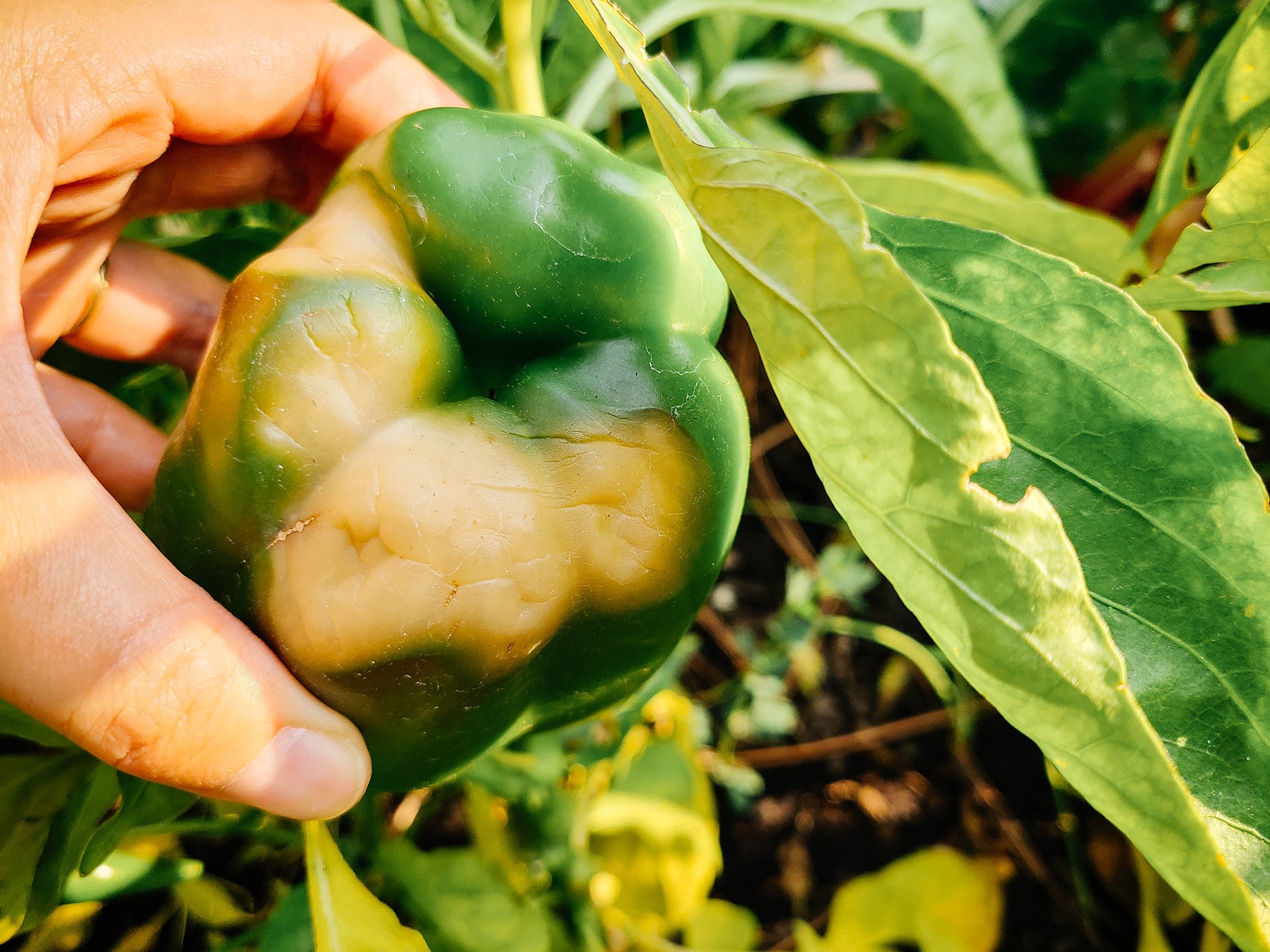
What is blossom end rot?
Blossom end rot is a physiological disorder—that is, a disfigurement of the fruit. It’s not “contagious,” as it won’t spread to the rest of the plant. It’s not a condition that lives in the soil, nor is it caused by fungi or bacteria.
However, blossom end rot tends to affect several fruits on the same plant at the same time, so it can be alarming when you first see signs of it.
You know how it goes: you stop to admire a large, well-formed fruit that seems to be on the right track, then you turn it over and find an unfortunate brown or black spot on the bottom. A spot that only gets worse!
You’ll most often see blossom end rot early on in the growing season, but it can appear at any time, depending on environmental conditions.
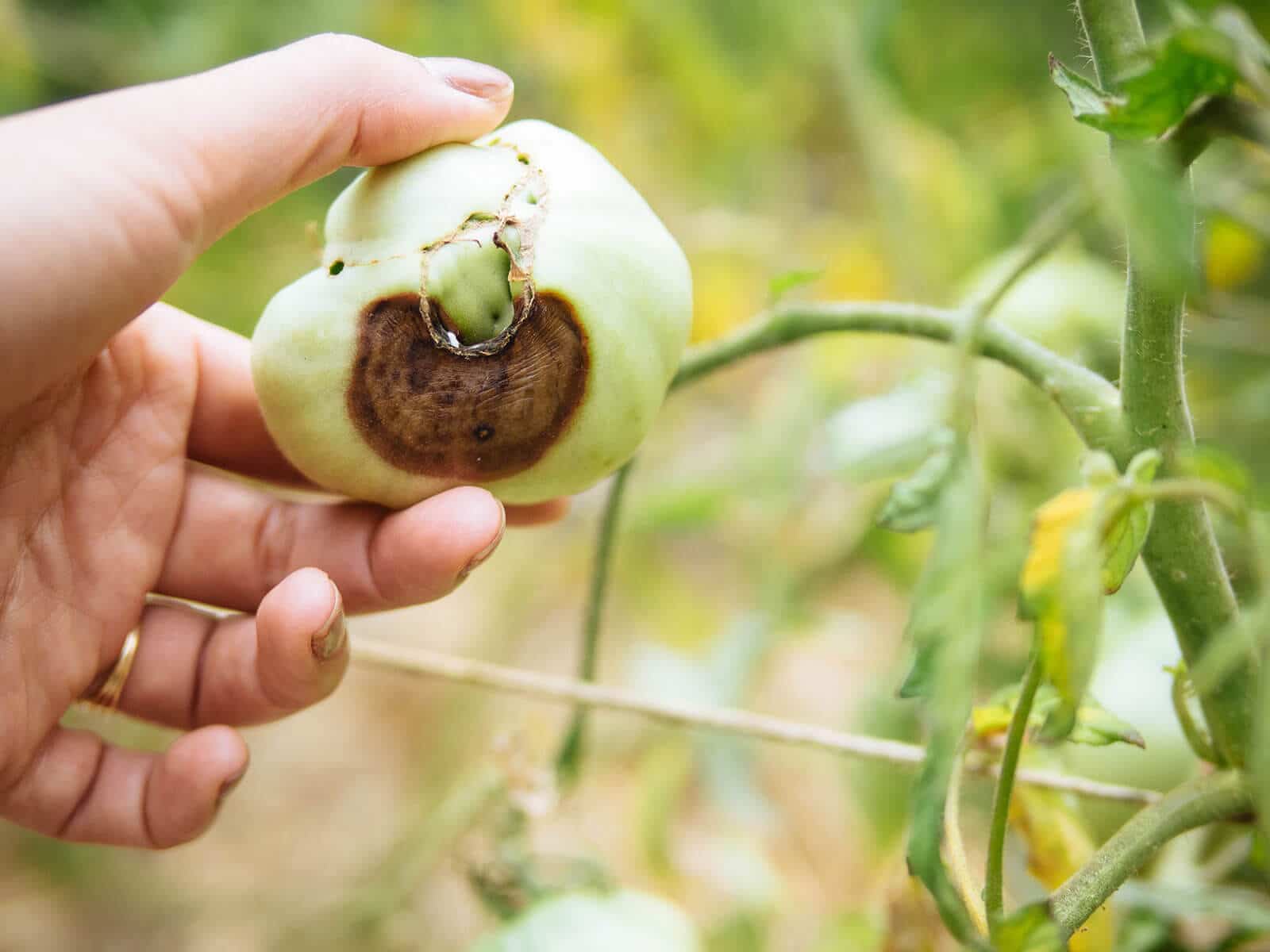
What causes blossom end rot?
There’s a misconception that blossom end rot is a result of calcium deficiency. An oft-touted solution is to add more calcium (by way of lime or crushed eggshells) to the soil.
But!
Blossom end rot is actually a result of inadequate uptake of calcium from the soil to the leaves and fruits, and there is a difference here.
Generally speaking, most garden soil has a sufficient amount of calcium in it. While calcium supplements can certainly help restore depleted soil and give your crop a boost, the only way to know how much to add is to get a proper soil test and find out what nutrients your garden is lacking.
Amending the soil with calcium above and beyond what is needed will not reduce the chances of BER.
The issue that affects BER is the movement of calcium from the soil and through the plant.
Calcium is required for cell growth, so it’s needed in high amounts by the developing fruit.
But studies show that there is competition between newly forming leaves and newly forming fruit for that calcium, and stress factors such as excess nitrogen, drought, moisture, and high heat can all reduce or prevent the calcium from reaching the fruit as it grows.
Read more: 6 Hot Weather Watering Tips to Survive a Heat Wave
Because the leaves have greater transpiration than the fruits, the leaves tend to receive more calcium, leaving the fruits to suffer.
Here’s the thing: Despite the many remedies floating around on how you can stop blossom end rot from wreaking havoc on your tomatoes, you cannot treat blossom end rot and you cannot reverse blossom end rot with fungicides, epsom salts, powdered milk, or other homemade sprays and solutions.
As you’ll learn below, the problem is likely to resolve on its own but there are steps you can take to lessen the chances or prevent blossom end rot from happening to your plants.
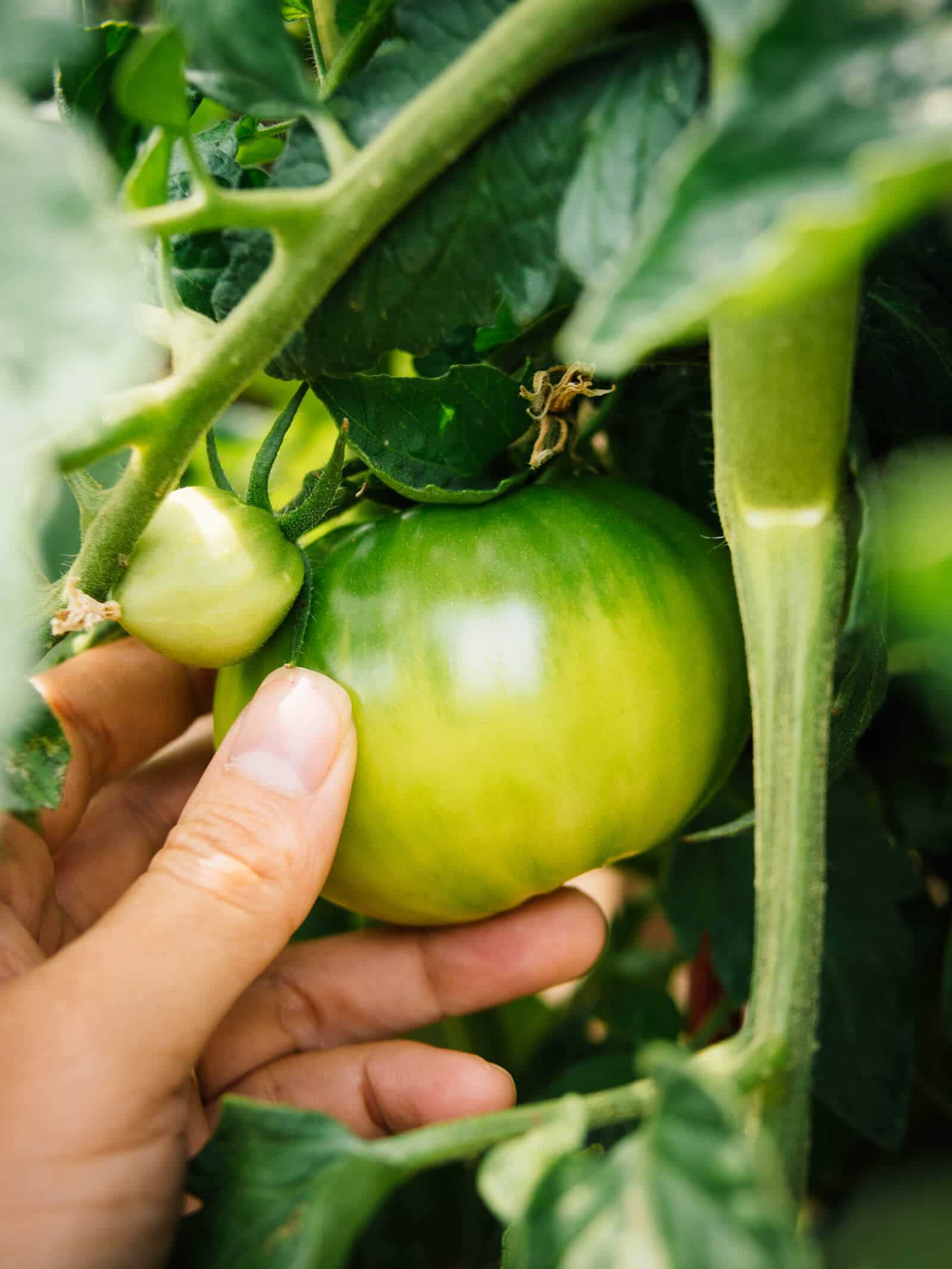
How to fix blossom end rot
Solution #1: Take it easy on the nitrogen.
Though nitrogen is a vital nutrient needed for plant growth, too much of it (especially when combined with fast-climbing temperatures) can cause foliage to grow too rapidly before various plant compounds have a chance to “catch up” and move enough calcium into the fruits.
Use a balanced, all-purpose vegetable fertilizer or tomato fertilizer at planting time to ensure your plant gets what it needs, but don’t overdo it (especially during early fruiting, when blossom end rot is most likely to occur).
Related: Fish Heads Are the Secret to Growing the Best Tomatoes
Avoid fertilizing in the peak of summer when temperatures are high, as over-stressed plants may go into semi-dormancy and not make use of the nutrients. (You can read more of my hot-weather watering tips in this post.)
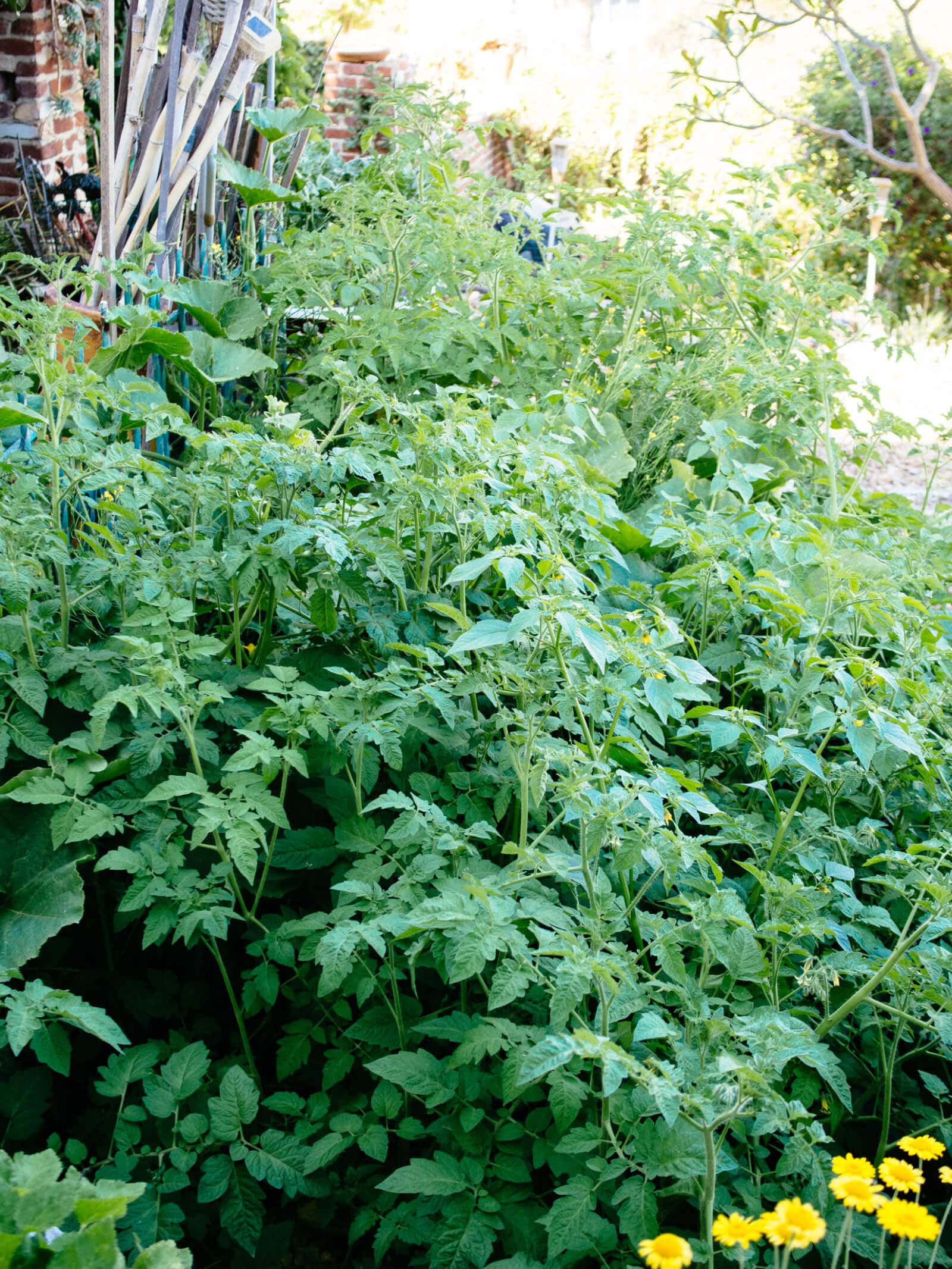
Solution #2: Water consistently and mulch well.
The conditions that cause blossom end rot are closely linked to inconsistent moisture in the soil.
Since calcium can only be moved into the plant by a constant, ample moisture supply, underwatering (or going between periods of drought and overwatering) can cause calcium deficiency as the nutrient is unable to circulate properly throughout the plant.
With tomato plants, remember to irrigate deeply but less frequently (so as not to waterlog the soil).
Tomatoes have long roots that benefit from long, consistent watering to make sure the moisture soaks in deep to where the mass of the roots are.
Tomato plants grown in containers will need to be watered more often than those grown in the ground or in raised beds.
Drip irrigation or soaker hoses (set on a programmable timer or irrigation controller) work best to deliver a steady stream of moisture to the root zone. I always advise against overhead watering; not only is it an uneven form of irrigation, it promotes fungal diseases on the leaves.
Read next: Drip Irrigation: Assembling and Installing Your System
Remember to mulch your tomato beds or containers with about 3 inches of organic mulch (my favorite is straw since it’s inexpensive and easy to find) to help the soil retain moisture.
Mulch also helps keep water from splashing up onto the leaves, leading to the aforementioned fungal diseases. The less stress you put on your plants, the better your harvest will be!
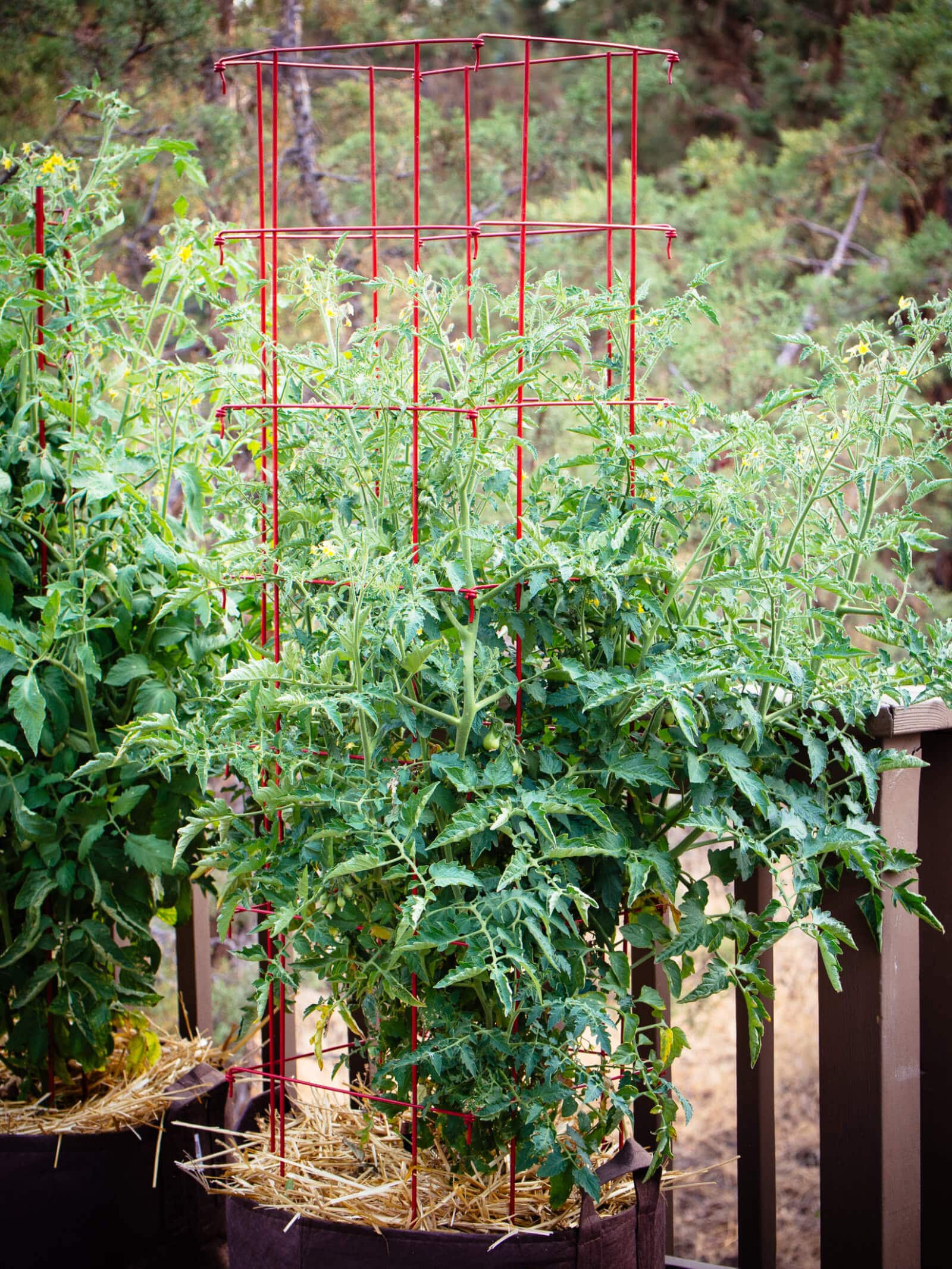
Solution #3: Avoid disturbing the plant roots.
Try to avoid deep cultivation of the soil near the plant roots after fruit set. If you need to control weeds, hand pull them or scrape the soil lightly with a hoe to remove them.
The most ideal way to curb weeds is to apply a thick layer of mulch around your plants to smother any unwanted seedlings.
Learn more: Grow Tomatoes Like a Boss With These 10 Easy Tips
Any major disturbance of the soil, especially when the weather is hot and dry, can stress the plant and affect the roots’ ability to draw moisture (and thus calcium) into the fruits properly.
In a similar vein, planting tomatoes in cold, heavy soil may cause poorly developed root systems that are unable to transport the needed nutrients to the plant. This may make them more susceptible to blossom end rot.
Related: Find First and Last Frost Dates Accurately with This Custom Planting Calendar
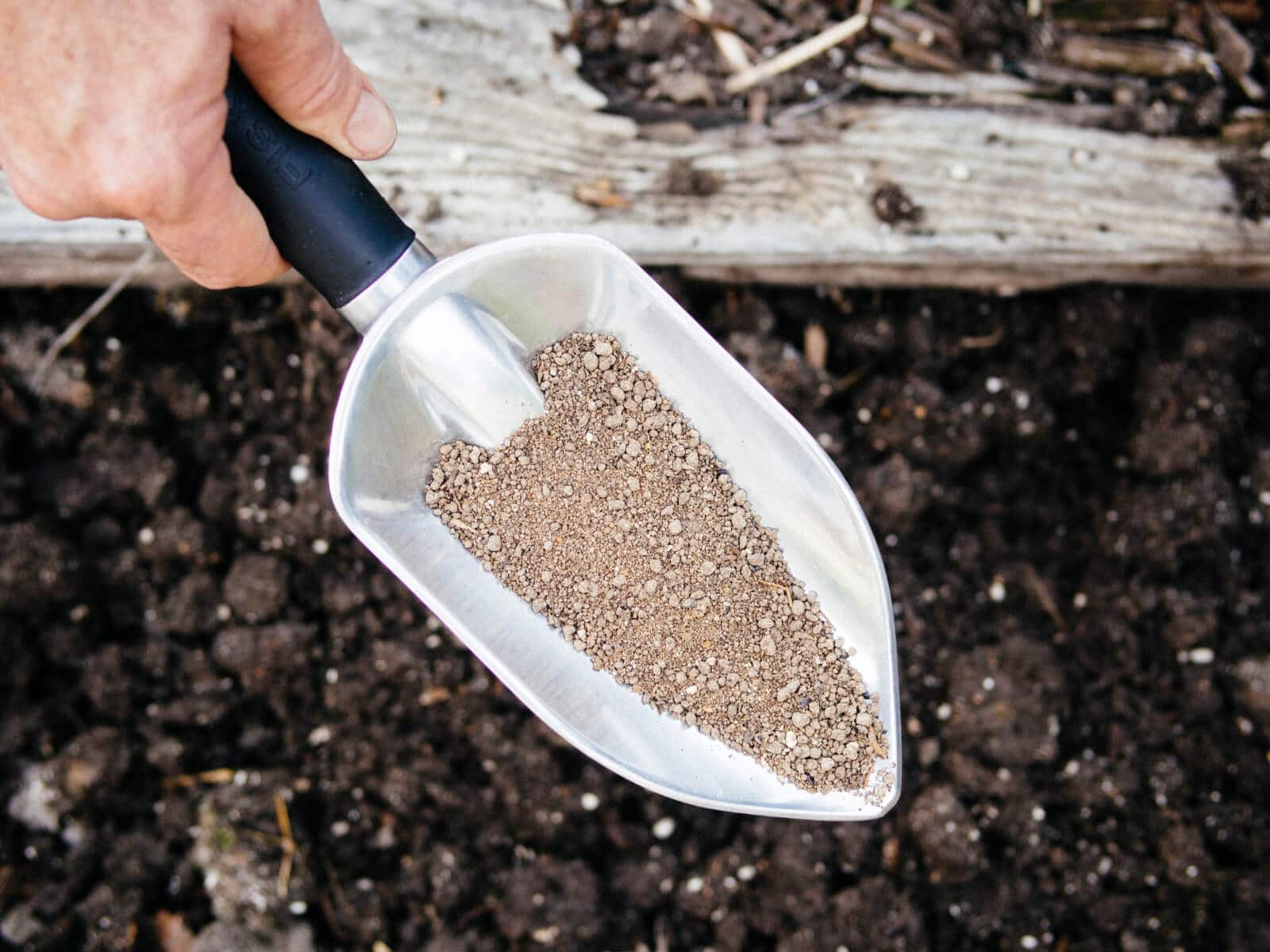
Solution #4: Amend the soil with the appropriate amount and type of fertilizer.
If you find that season after season, your fruits are continually afflicted with blossom end rot despite your most valiant efforts to water them, it’s time to take a soil test.
There are many home testing kits available, but for the best, most accurate results, contact your cooperative extension office and ask them to send your soil to a local lab.
A good, reliable soil test will set you back around $50, but it’s money well spent in the long run as it will give you a broad, accurate overview of your soil health and what you can do to improve it.
Read next: Brewing Compost Tea for Better Plant Health
Working with a local lab also means you can tell them you garden organically so they don’t make suggestions for chemical fertilizers you may not want to use.
If your tomatoes already show signs of blossom end rot, there’s not much you can do to “cure” it.
Small areas of damage can be cut off, leaving the rest of the fruit to be enjoyed. (Yes, you can still eat tomatoes with blossom end rot, assuming the non-damaged portion has developed normally.)
Tomatoes with severe BER should be picked and composted (or discarded). The problem will usually resolve on its own with the next round of fruit as the season goes on.
While you can help create a more favorable growing environment for your plants by following the solutions outlined above, know that certain varieties of tomatoes (especially those big, juicy slicers) are simply more prone to blossom end rot than others.
If all else fails, try growing cherry, grape, or similar smaller tomatoes, as they almost never have trouble with BER. You can also look for BER-resistant varieties when you order next season’s seeds.
My favorite small tomato varieties: Chocolate Cherry, Artisan Tiger Stripes Blend, Rainbow Blend, Indigo Rose
Just be sure to remove any rotting fruit as soon as you see it—you want the plant’s energy to go into growing good, healthy tomatoes!
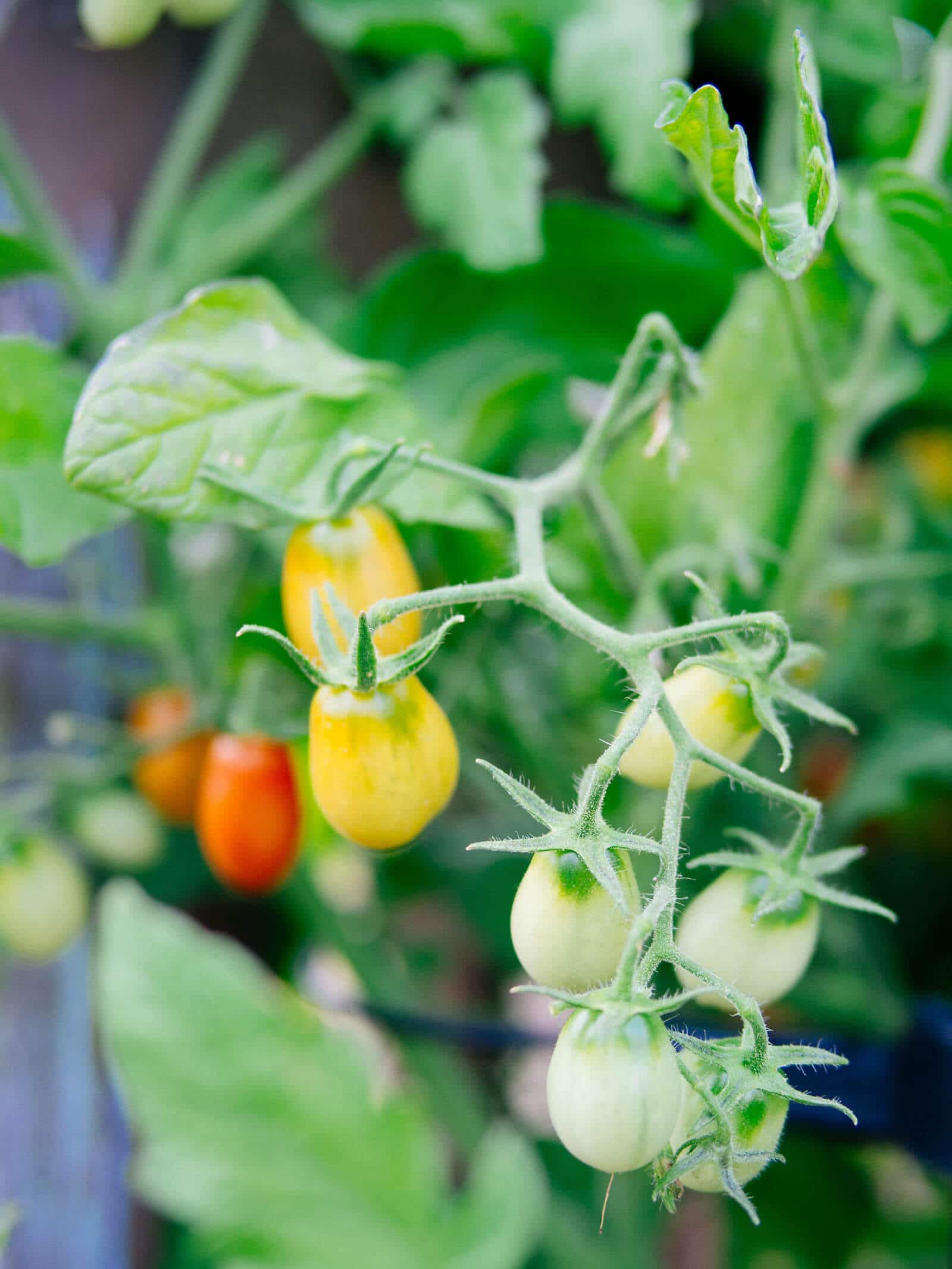
Where to buy tomato growing supplies
[show_shopthepost_widget id=”3967274″]
Dr. Earth Premium Gold All-Purpose Fertilizer | Dr. Earth Organic Tomato, Vegetable, and Herb Fertilizer | DripWorks Garden Bed Irrigation Kit | Gilmour Flat Soaker Hose | Orbit Programmable Hose Faucet Timer | Rain Bird Irrigation Timer | Rachio 3 Smart Sprinkler Controller | Soil Savvy Soil Test Kit
This post updated from an article that originally appeared on August 26, 2019.
More tomato growing posts to explore:
- Grow Tomatoes Like a Boss With These 10 Easy Tips
- How to Grow Tomatoes in Pots—Even Without a Garden
- How to Best Fertilize Tomatoes for the Ultimate Bumper Crop
- How to Repot Tomato Seedlings for Bigger and Better Plants
- Why and How to Transplant Tomatoes (a Second Time)
- Planting Tomatoes Sideways: How Growing in a Trench Results In Bigger Healthier Plants
- Florida Weave: A Better Way to Trellis Tomatoes
- Conquer Blossom End Rot and Save the Harvest
- Can You Eat Tomato Leaves? The Answer Will Surprise You
- Why Tomato Leaves Have That Unique Smell
- The Power of Fermenting and Saving Tomato Seeds
- 4 Fastest Ways to Ripen Tomatoes in the Garden and Beat the First Frost
- The 30 Best Tasting Heirloom Tomato Varieties (By Color!)
- 83 Fast-Growing Short-Season Tomato Varieties for Cold Climates
- The Best Time to Pick Tomatoes for Peak Quality (It’s Not What You Think!)
View the Web Story on treating blossom end rot in tomatoes.


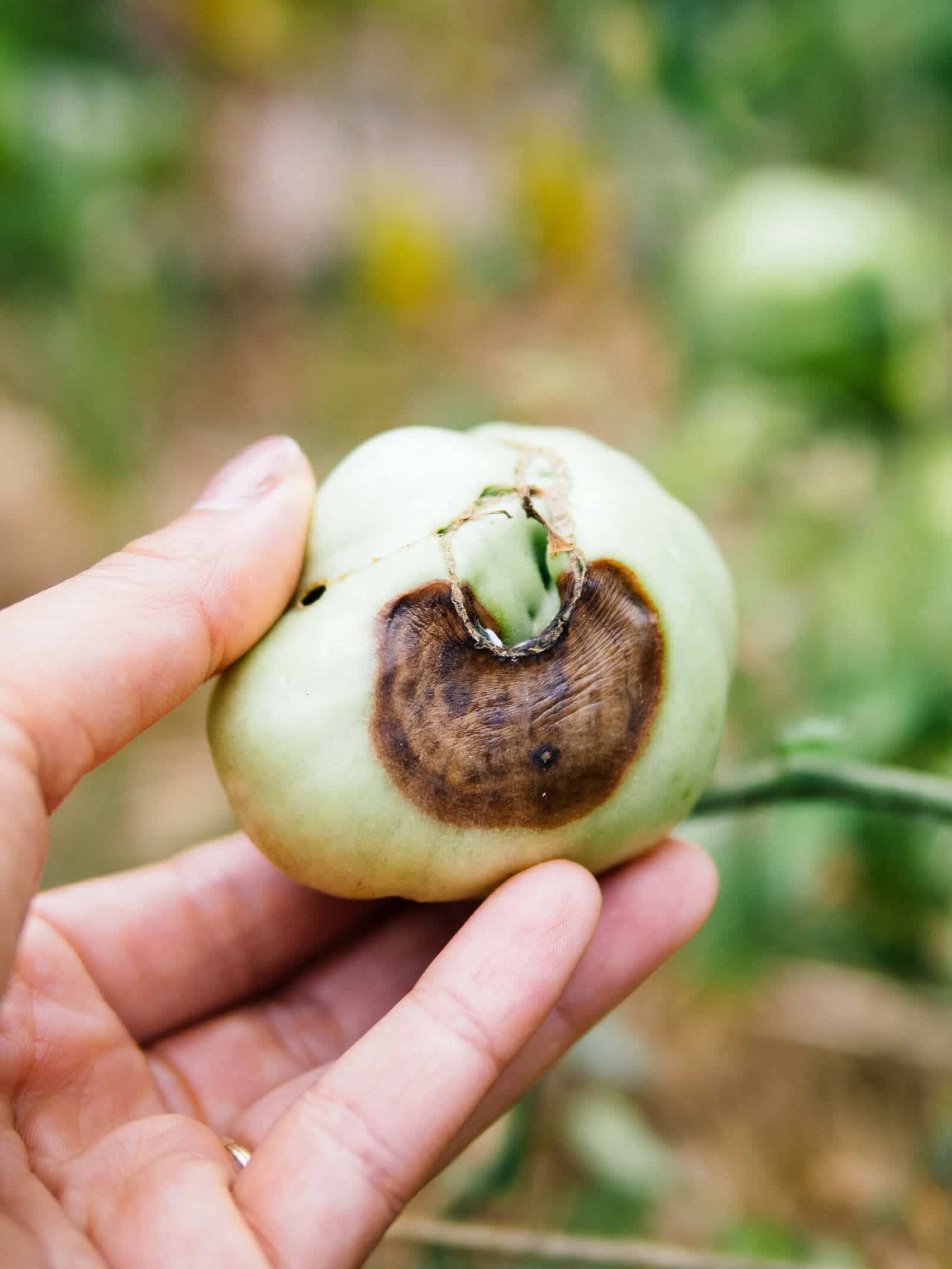













BER can also be caused by a lack of boron. Boron facilitates calcium to the plant. You may have enough water and calcium uptake, but if there is a lack of boron the tomato plant is also likely to get BER. Boron leaches from the soil in areas with a lot of rain or too much added water. A good soil test from a good lab is the best way to know.
Great tip
What type of straw do you use for Mulch and where do you get it from? I’m nervous about using it because I understood that it may have seeds in it.
I use a produce called Azomite. It is mined in Nevada from an ancient volcano deposit.
It has calcium and other micronutrients in it.
Only time I get BER is if the summer temps are HOT and windy where the roots cannot take up enough water.
Or I forget to water for a few days.
Right now I use a home made dripper rig.
2 different rigs (one costs a bit to buy the one tubing I needed). Other used a string.
Constant moisture is the key. Moist but not wet.
Some use a sun shade to shield the tomato plants from the hot afternoon sun but I have tall trees that do that for me.
First 8 hours of morning sun is what works best.
Another item I am trying is calcium nitrate just as an experiment.
Update
For the tomato plants I have in containers (but not supported by a fence or cattle panel), I use 5 gal buckets with holes drilled in the bottom. I place the dirt filled bucket in a new oil change pan (the round ones at wally world).
I plant the plant.
I fill the oil drain pan with water.
Instant sub irrigation!
Also, I have my plants getting the first hours of sunlight till about noon, then shade after that.
Still getting some BER due to high heat of the summer. But most are OK.
Biggest problem is blister beetles.
NASTY little bugs.
They can skeletonize a plant in a few days.
NEED oil spray works to disrupt their digestive system and they die in about 3-4 days.
WARNING! The acid they produce will kill health HUMAN and animal tissue.
6 grams of them is enough to literally kill a horse.
They can be quite dangerous.
Wear impervious gloves if you can.
Thanks for this timely piece. Some of my big tomatoes are showing blossom end rot. I wonder if pruning them might help, since you said the leaves compete with the fruits for calcium. Anyone have any thoughts on that?
I save all my eggs shells and when the container is full I put in the blender for a few seconds. I use these shells for my garden but particularly in my tomato beds. I sprinkle like magic tiny chips of over all my garden.
This is really good information for all the gardeners out there! I love gardening, but I also know how frustrating it can be when you notice the blossom end rot on some tomatoes that you nurtured. Sometimes it’s just best to pick them and wait for the next ones to bloom. Best of luck to you in all of your gardening endeavors!
Thank you for your comment Lydia!
Pelletized gypsum or Azomite works well too.
Best time to prep soil is in the fall.
Till in leaves, wood ashes, soil sulfur.
Let nature do the rest all winter for you.
Great info. Thank you!
One extra note on blossom end rot: If you have a very rainy spring or early summer, blossom end rot may happen even in the best of circumstances. It’s ok, though, just pick and discard and the next tomatoes up the plant may be fine. Happy gardening!
Great insight Susan!